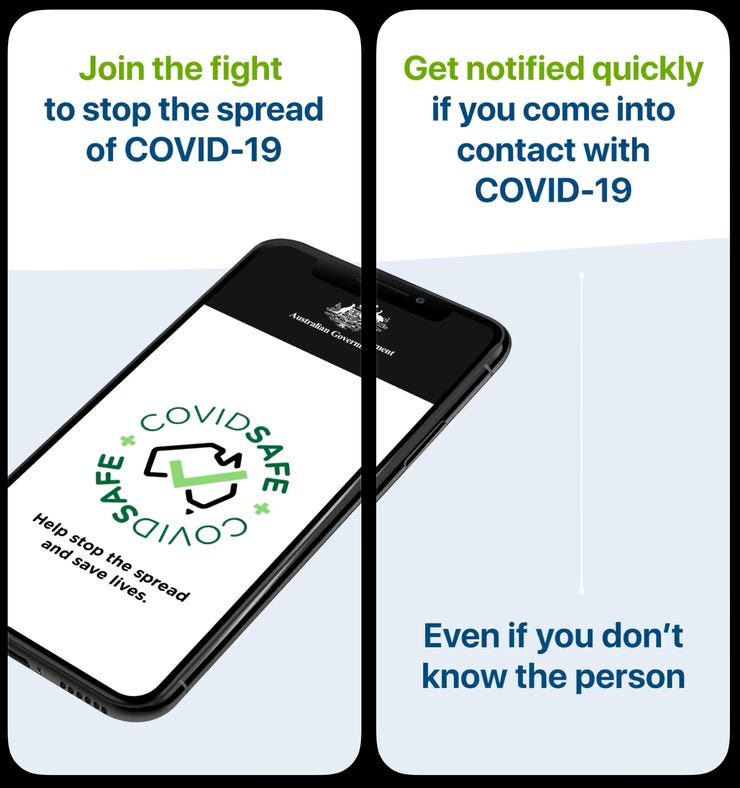COVIDSafe: Australia's new trace tracking app is now live, but registration isn't


Australia now has its long awaited COVID-19 trace tracking smartphone app, COVIDSafe.
While downloading and using the app is voluntary, Prime Minister Scott Morrison has been pushing its use as a national service, on Sunday, adding that Australians "need the COVIDSafe app as part of the plan to save lives and save livelihoods".
"The more people who download this important public health app, the safer they and their family will be, the safer their community will be and the sooner we can safely lift restrictions and get back to business and do the things we love," he said.
While the app is available for download, users on Sunday afternoon were highlighting issues with registration.
Once the app is downloaded, users move through two pages of information, plus a consent form that asks the user to agree to the Department of Health collecting registration information to "allow contact tracing by state and territory health officials" and contact information from other COVIDSafe users after they test positive for coronavirus.
Users are then asked to enter their full name, age range, and postcode. The next step is entering a mobile number to receive a PIN.
Upon attempting to complete this step, some users have been shown an error message.
"Error verifying phone number. Please check your details and try again," the message on iOS reads.
For Android users, app reviewers mentioned their respective phone numbers were also invalid.
In describing the app, hosted by Amazon Web Services, Minister for Government Services Stuart Robert said it makes a "digital handshake" with other users of the app.
The app is a rework of Singapore's TraceTogether. It taps Bluetooth signals to detect other participating mobile devices in close proximity to allow them to identify those who have been in close contact when needed.
The app is able to estimate the distance between TraceTogether smartphones as well as the duration of such interactions.
It identifies participating TraceTogether users who are within two metres of each other for more than 30 minutes. The data then is captured, encrypted, and stored locally on the user's phone for 21 days, which spans the incubation period of the virus.
Singapore has only had a 20% buy-in, but Morrison said Australia would need to at least double that for the initiative to work.
In the lead up to the app's release, the federal government received criticism for not providing the public with assurances the app would be secure, and that a user's privacy would be paramount.
"The Commonwealth can't access the data, no government agency at the Commonwealth level, not the tax office, not government services, not Centrelink, not Home Affairs, not Department of Education -- the Commonwealth will have no access to that data," Morrison said previously, explaining the data will be locked in an encrypted data store that can only be accessed by state health "detectives" -- those currently performing tracing efforts.
Registration issues with the app is not the first technology blunder the federal government has suffered recently, with those seeking welfare assistance as a result of COVID-19 met with a roadblock.
Robert -- who in October 2018 was found to have spent 20 times more than other MPs on his home internet, clocking up more than AU$2,000 a month and blaming "connectivity issues" for the high costs -- said last month that the government's online portal myGov had suffered a distributed denial of service (DDoS) attack, when it was simply that thousands flocking to sign up for welfare had pushed the portal past its 55,000 concurrent users limit.
RELATED COVERAGE
- Canberra has confidence in AWS' ability to securely store COVID-19 tracing app data
- No Commonwealth access to Australia's COVID-19 contact tracking app
- Coronavirus tracing tech policy 'more significant' than the war on encryption
- Robert says COVID-19 tracking app will bring Aussies closer to having the footy back
- Australia looks to 'go harder' with use of COVID-19 contact tracing app
- Human rights groups warn governments of privacy laws when tracking COVID-19
- COVID-19: Australia's new app, WhatsApp chat, and telehealth launch